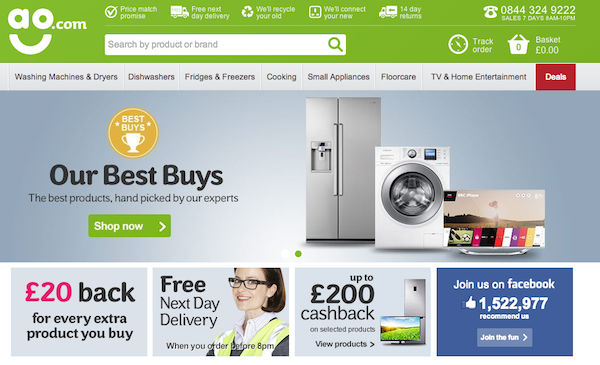E-commerce entails the buying and selling of products through an online platform. It is a phenomenon that is still growing exponentially across the globe. According to recent forecasts, by the end of 2016 B2C e-commerce sales shall amount to over $1.5 trillion. Hence, there are countless e-commerce service providers on the internet. They range from large catalog retailers to niche premium retailers offering everything from jewelry to furniture to fresh groceries at the click of a button.
So, how can an e-commerce website stand out in this humongous crowd? In today’s fast-paced and competitive landscape, first impressions are everything. When a visitor first arrives at your e-commerce home page, they take about 50 milliseconds to decide whether or not they want to stay and buy from you.
That’s all the time you have to captivate and engage your customers and consequently make sales. Not a lot of time, is it? Yet, there are tried and tested ingredients that create irresistible e-commerce home pages.
We did an anatomical analysis of the leading e-commerce websites worldwide, looking at the features which helped them convert. We also looked at industry best practices that enable e-commerce websites to sell their way to success.
1. Win Hearts With Web Design:
The very first thing that will have a decisive impact on your website’s visitors is visual appeal. These days, it’s all about attracting customers with nothing short of mouthwatering web design. However, it is also important that the web design is in line with your company’s branding so that from the moment they land on your e-commerce home page they know what your company is all about. For instance, if you are a niche retailer; a simplistic yet strong design works better as it signifies that less is more! On the other hand, large catalog retailers should boast their diverse range of products through their design in a smart manner. Just look at Amazon.
Best Practices:
1. A popular technique is to use a combination of flat and material design techniques to make a stronger impact while saving space. Here are some strong visual websites to give you an idea of what we mean. The hybrid of both designs adds a life-like look to the website by amalgamating the layered effect of material design and the modern hint of flat design. Moreover, it also makes clickable objects prominent and easy to identify and reduces the overall load on the website making your e-commerce home page faster.
Here’s a personal favorite!

2. Large but legible typography that is distinct from its background captivates visitors and serves brilliantly to strengthen branding as well as portray hierarchies on the page. A growing trend here is to use a handwriting font for your some of your e-commerce home page’s content. This home page from www.marieforleo.com has a personal touch from the handwriting font.

3. Leading e-commerce home pages have unique website headers and footers that set them apart from other brands.
4. Rich animations help break the ice with visitors and make their experience enjoyable. Also, animations can be used to guide people through long navigations. Moreover, animations can also be used to accompany users as they wait for processes to load. It is recommended that a spinning icon is associated with clickable objects to let users know that their intended process is underway.
5. A card design for your page is known to be extremely effective in gaining the interest of visitors.
6. E-commerce home pages can be embellished using grid style images in some cases, but the latest trend is to use changing images to represent product categories. We also see that the most renowned e-commerce home pages use information pertaining to previous searches made by users to decide which images should be displayed.
7. Swiping, tapping and pinching provisions should be used to help visitors access more information on mobile websites. Some of the most popular e-commerce websites use sliders on their home page to pique customers’ interest.
8. Elongated scrolling is one of the most popular preferences for e-commerce home pages. It enables thorough product and company representation, uplifts user-experience and is a powerful tool for making a strong first impression. Moreover, research has shown that after landing around 90% of visitors scroll until the bottom of the page.
[tweetthis]There are tried and tested ingredients that can allow e-commerce websites to conjure an ideal e-commerce home page.[/tweetthis]
2. Search and Navigation That Stand Out:
One of the most essential requirements of an e-commerce home page is a clearly visible search bar and navigation. It enables users an easy means of locating what they require. This is particularly important in the case of e-commerce websites where users can easily get confused amid the wide range of categories.
Best Practices:
1. Having a search bar that remembers past searches and offers suggestions is found to uplift the overall user-experience. Here’s a guide to help you get started; How to Design an Ecommerce Website Experience Your Shoppers Adore. The search bar is ideally situated at the top of an e-commerce home page and should be designed to be prominent and visible.
2. The navigation should present all the key pages of the website. However, be sure not to use too many options, as it will overwhelm customers. Use hidden menus that appear on hover to unclutter your navigation. It is very important that visitors are able to find your product categories listed on the top of the navigation.
3. Be Memorable With Your Logo And Slogan:
The success of an e-commerce home page lies in its ability to be recognized. Hence, we see that profitable e-commerce platforms proudly display their company logo and slogan on their e-commerce home pages.
Almost all leading e-commerce platforms display their logo on the top-left corner of their home pages. This is done since research has indicated that users are 89% more likely to remember logos that are displayed on the top left corner as opposed to the top right corner. Nevertheless, some choose to place on the right because it breaks the usual pattern. Wherever you place it, the logo must pop out from the background and be easily noticed on all platforms via responsive web page design. The slogan should be placed near the logo to help the viewer form an association between your brand name and the slogan.
Here’s an interesting thing that Marie Forleo does. Every time you hover your mouse over her logo, it changes and gives a memorable message. Like this;

And this;

It is so well done that I stayed at the site for a good 20 minutes to explore all the messages she wanted to give me!
4. Crystal Clear Contact Information:
A crucial ingredient of a perfect e-commerce home page is a boldly displayed contact method in the header. The contact method should be placed in the middle near the top of the page. Moreover, you should add more detailed contact information like physical addresses, emails, and phone numbers in the footer. These are absolutely essential as they give credibility to your brand.
5. Reassure Visitors With Security Accreditations:
We only spend our hard-earned money online if we are certain that the platform is secure. It is for that reason we see that all major e-commerce websites boast their security accreditations such as security certificates, awards, etc. on their e-commerce home pages. This builds trust in users and also sets credible e-commerce service providers apart from the rest. Security accreditations should be visible as soon as a visitor lands on the home page.

6. Stand Differentiated With Your Unique Selling Propositions:
In the hyper-competitive arena of e-commerce, the best e-commerce websites highlight their unique selling propositions on their home pages. These can include free and speedy delivery, a wide range of secure payment partners, discounts, etc. These USPs become more prominent if placed right under your mega scroll bar, as in this example.

7. Captivate With Merchandising:
The bread and butter of e-commerce websites are their products, therefore profitable websites like Airg display all their product categories on their e-commerce home page in line with their customers’ needs. This is crucial since two-thirds of all sales made are affected by merchandising.
Most effective e-commerce home pages use two levels of merchandising. Your main product categories are displayed in the primary merchandising zone that is located under the USPs. Moreover, additional useful information including most popular, most sold, recently viewed, highest customer rating products, etc are marketed in the secondary merchandising zone. The secondary merchandising zone is ideally placed towards the lower section of the home page.
It is recommended that products be categorized and labeled using terms that customers usually use and are easily understandable by your target audience. You can also use product pictures to link customers to specific product categories.
8. Hidden Menus:
Hidden menus are navigation mentions that appear only when a visitor hovers over that particular section. Their use is recommended as it gives the impression that your website is interactive and cognizant. Moreover, they are excellent means of reducing clutter on an e-commerce home page. Hidden menus are sometimes accompanied by a pin button that enables users to permanently view the menu as they browse the rest of the page.
Hidden menus can also be used to present your Calls to Action or CTAs. CTAs include all the actions that you wish for a user to take with respect to any particular tab on the home page. For example, while hovering over a product, a hidden menu may appear giving users the option of adding that product to their cart, viewing other available shades for that product, etc.

9. Seal The Deal With Persuasive Copy:
E-commerce home pages present the most effective platform to increase sales via persuasion messages. Despite all of the technical wizardry in e-commerce home page design, good copywriting is necessary to finish the deal. Persuasive messages should be extracted from your marketing campaign to highlight your products, their features or the unique customer service that you offer.
10. Summarize Your Shopping Carts:
All well-structured e-commerce home pages display a shopping cart symbol towards the top of the page. This symbol takes users straight to their shopping carts. This is also a good place for a hidden menu. Hovering over the cart should show a summary of what is in there along with an estimated bill.
[tweetthis]Despite all of the technical wizardry in home page design, good copywriting is necessary to finish the deal.[/tweetthis]
11. Build Your Brand Community With Social Media:
All premium e-commerce websites offer links to their social media platforms such as Facebook, Twitter, LinkedIn, Instagram on their home page. Integrating these platforms to the home page of your corporate website allows you to develop your brand community. These social media links are ideally placed below the footer near the contact information.
12. Keep Things Up And Running:
A key indicator of a progressive e-commerce service provider is frequently updated home page content. It is recommended that your merchandising, most-purchased product lists, promotional offers, etc. be updated on a weekly basis. This is also good for SEO purposes.
13. Be Responsive:
E-commerce home pages should be perfectly responsive towards mobiles and tablets. It is only then that e-commerce service providers can capitalize on the huge customer base that shops via these devices. People choose to use mobile devices over PCs, and have since 2014. Use good responsive design throughout your web code. This advice is equally important for service and different product websites.

So there you go! Include these features on your e-commerce home page and get ready to cash in on the benefits.
Alma is a mother, wife and a content marketer by choice. She has completed her masters in English literature from the University of Groningen. As a blogger, she has written quite a few posts on health, technology, and management. She loves to discover new places and share experiences in words. Oh, Alma- is incomplete without cats. Find her on Twitter: @Almacausey




